
Located on the slopes of Mount Hor, the Nabataean city of Petra in south-central Jordan remained unknown to the Western world until 1812 when a Swiss explorer named Johannes Burckhardt ‘rediscovered’ Petra. Dressed as an Arab, he convinced his Bedouin guide to take him to the lost city of the rocky desert. Ever since, we all know about this lost city.
The ‘Rose City’ is a honeycomb of hand-hewn caves, temples, and tombs carved from blushing pink sandstone in the high desert of Jordan some 2,000 years ago.
National Geographic Magazine
Petra’s History
Human settlement in this area has been traced back over 10,000 years – a place where great natural, cultural, archaeological, and geological features merge.
This rock-carved city was established around the 6th century BC as the capital of the Nabataeans, a nomadic desert people.
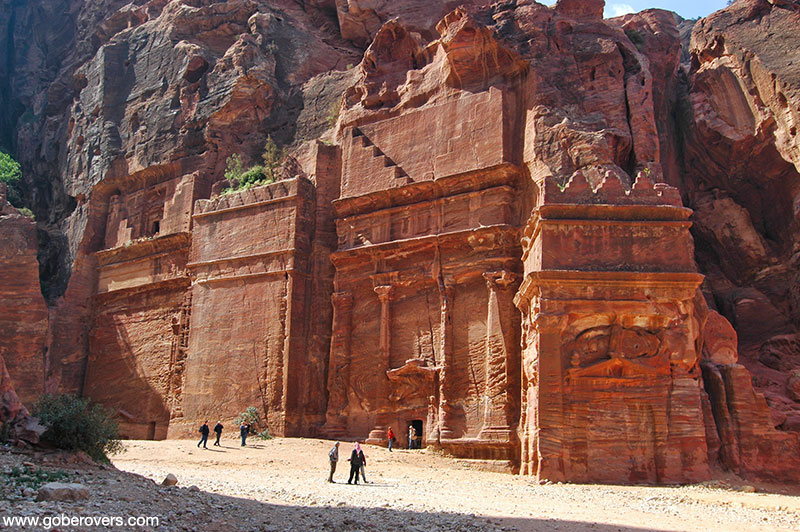
The Nabataeans buried their dead in intricate tombs that were cut out of the rose-red rock of the mountainsides. The city also had temples and an amphitheatre.
Following the Roman annexation and Byzantine influence, the city was embellished with collonaded streets and churches.
However, Petra’s glory days declined rapidly under the Roman rule, along with changes in the frankincense, myrrh, and spices trade routes. A deadly blow to the city was when an earthquake in 363 BC destroyed its water management system. By the middle of the 7th century, Petra appears to have been largely deserted.
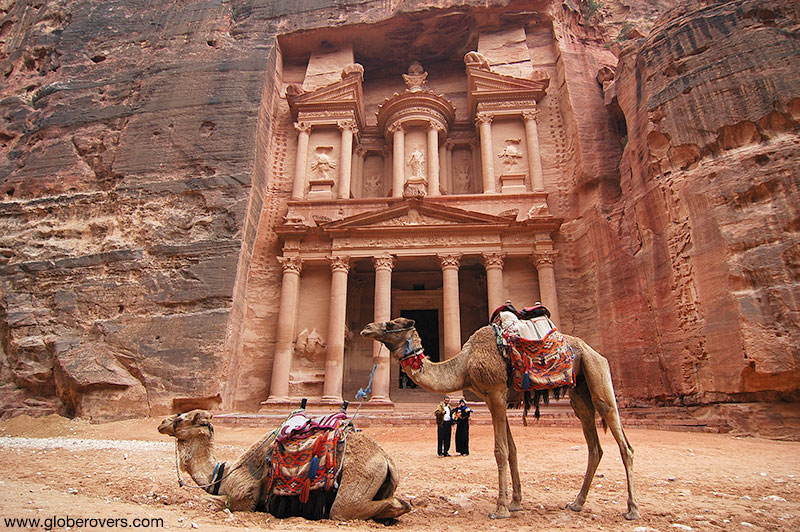
Highlights of Petra
The Treasury (Al-Khazneh) is the most recognisable structure at Petra. The Siq (entrance to Petra) opens out onto the city’s most magnificent façade – The Treasury. At almost 40 m high, it is intricately decorated with Corinthian capitals, friezes, figures and more.
This elaborate temple of classical Greek-influenced architecture is carved out of a sandstone rock face. Constructed during the 1st century BC, it consists of two floors with a width of over 25 m and a height of 39 m.
Recent excavations have unearthed burial chambers beneath The Treasury.
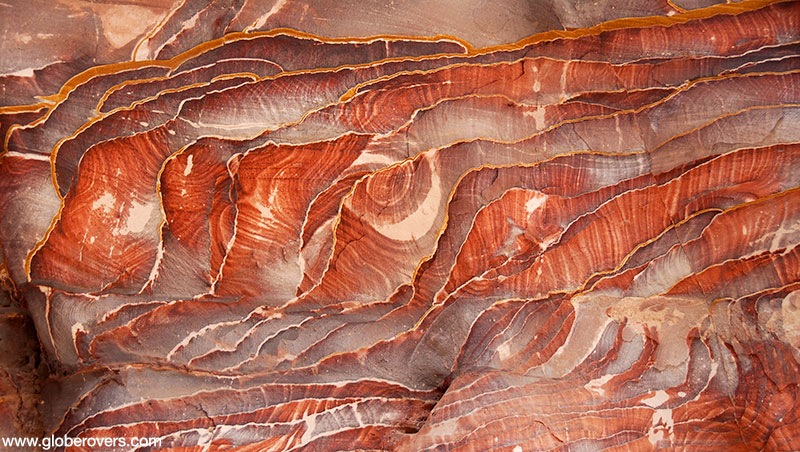
Petra is also known as the “Rose City”, a name it gets from the wonderful colour of the rocks from which many of the city’s structures were carved.
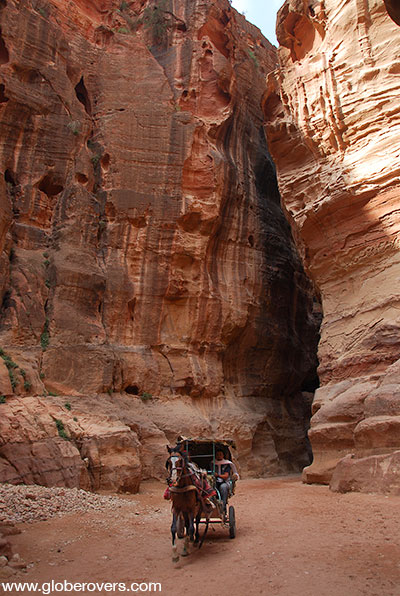
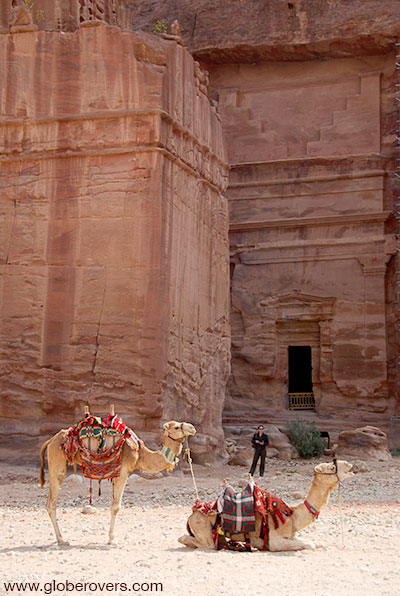
In December 1985, Petra was designated a World Heritage Site, while the Smithsonian Magazine listed Petra as “one of the 28 places you should visit before you die”.
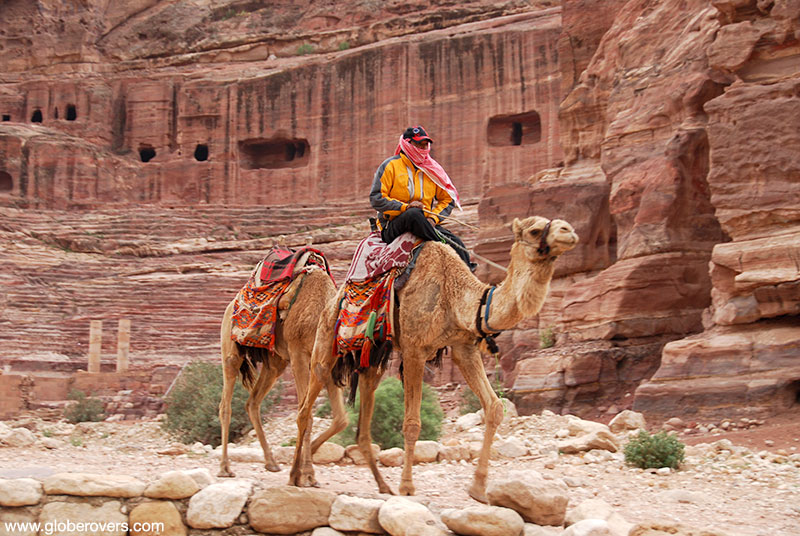
Petra spans a large area that can be covered in two or three days. You need good hiking shoes and a lot of energy to climb the many steps and hike the steep paths. Beyond the city limits live several cave-dwelling Bedouin families.
People Living on the Outskirts of Petra
The Outskirts of the City are not as grandeur as the inner city, and therefore less visited. However, it is possibly the most rewarding part of the city. En route to this area are many significant structures such as the High Place of Sacrifice – one of two obelisks on top of the mountain dedicated to Nabataean gods (photo above). Other structures include the 5 metre-long Lion Monument, the Garden Tomb, Roman Soldier’s Tomb, Garden Triclinium, and a lot more.
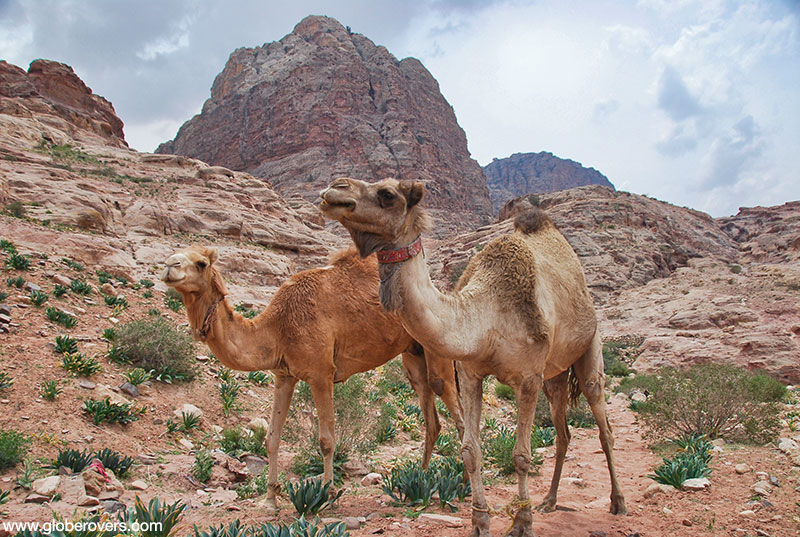
The Bedouin People of Petra live mostly in caves outside the furthest reaches of the ancient city. These people eke out a living in a modern-day tourist site, though many of them do not come into daily contact with tourists. Further away from the touristy areas the Bedouins’ daily lives have not changed much over the years. They are generally very welcoming to the odd traveller who ventures into their territory.

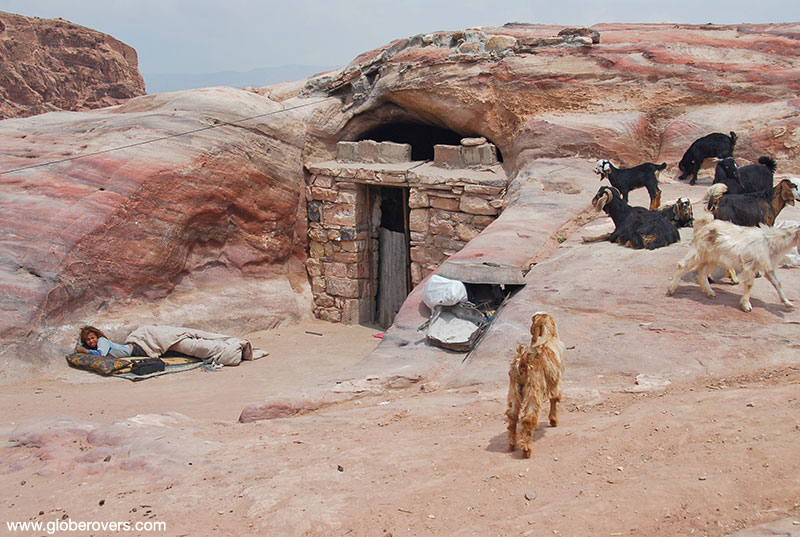
The town of Petra is a three-hour drive south from Jordan’s capital, Amman. The archaeological city starts a few kilometres outside the modern town. Most hotels offer a free drop-off at the entrance gates.
Wadi Rum
To the south of Petra is the Valley of the Moon (Wadi Rum) in southern Jordan. A place not to be missed!
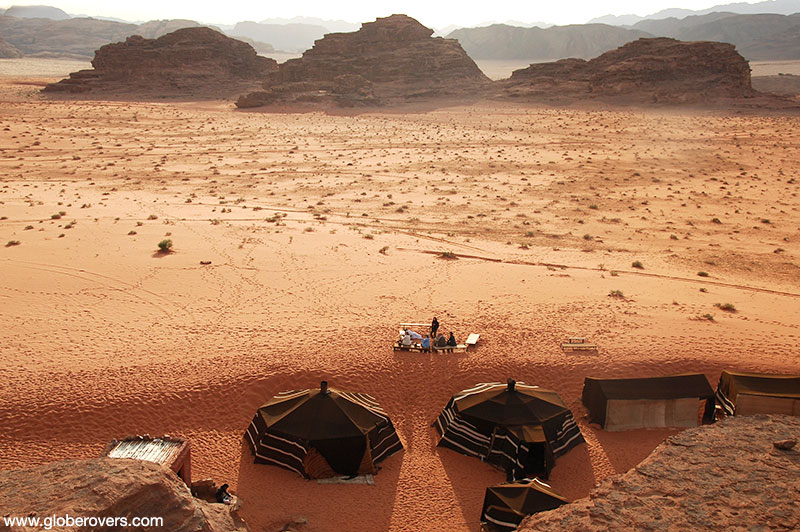

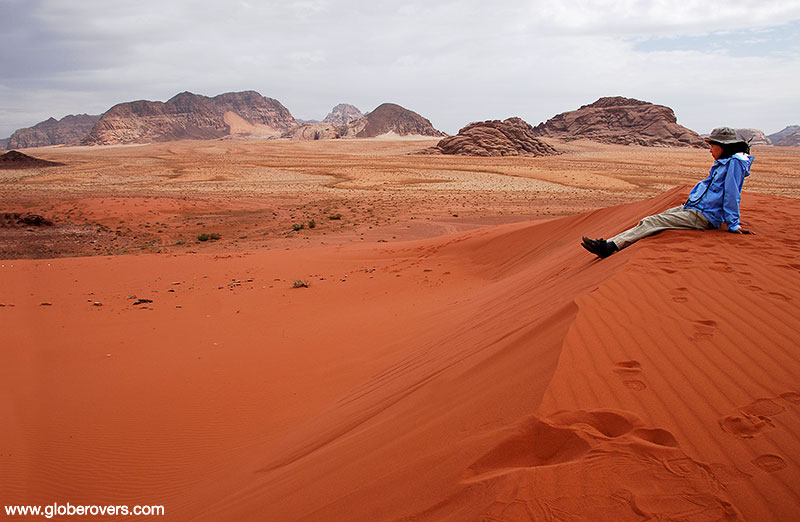

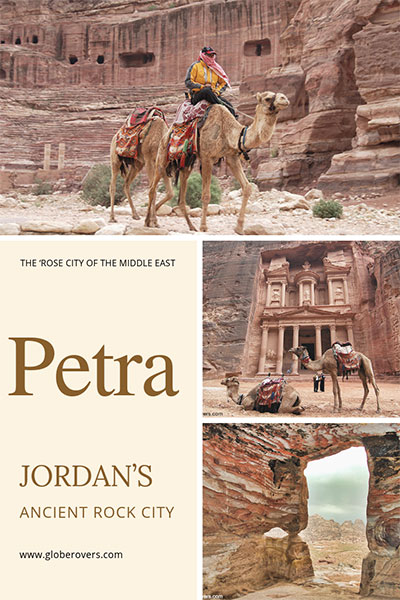

Blog post and photos by Peter who has been travelling almost full-time since 2005 and has been to over 122 countries. He visited several countries, such as Japan, more than 20 times. Peter is Editor-in-Chief and Publisher of GlobeRovers Magazine, an independent travel magazine focused on intrepid destinations.
